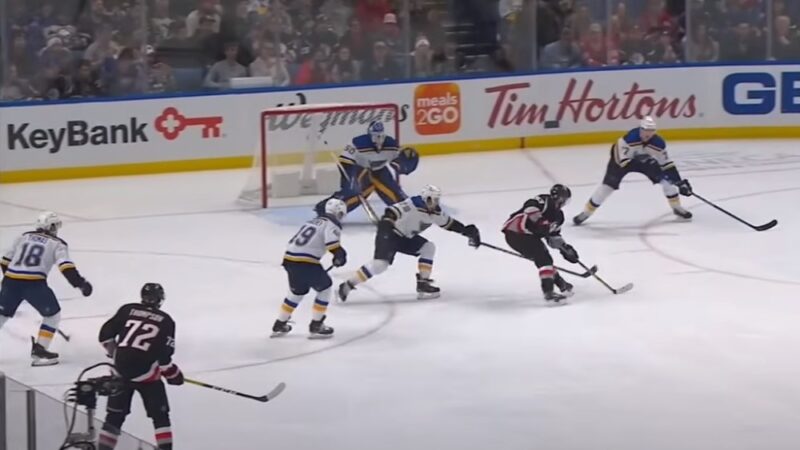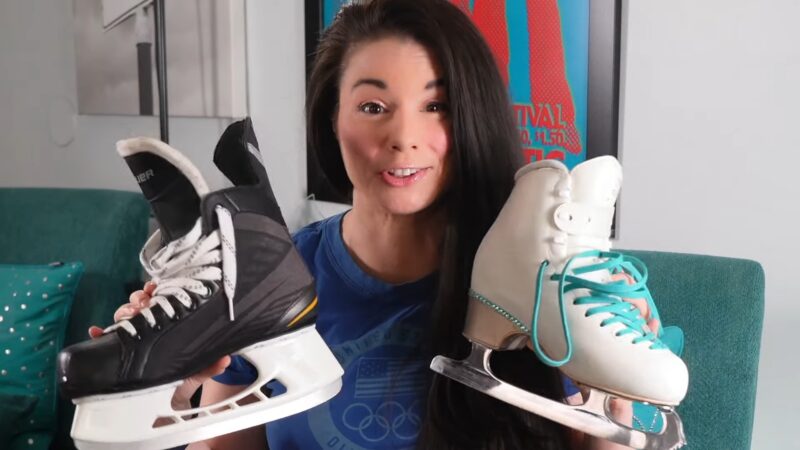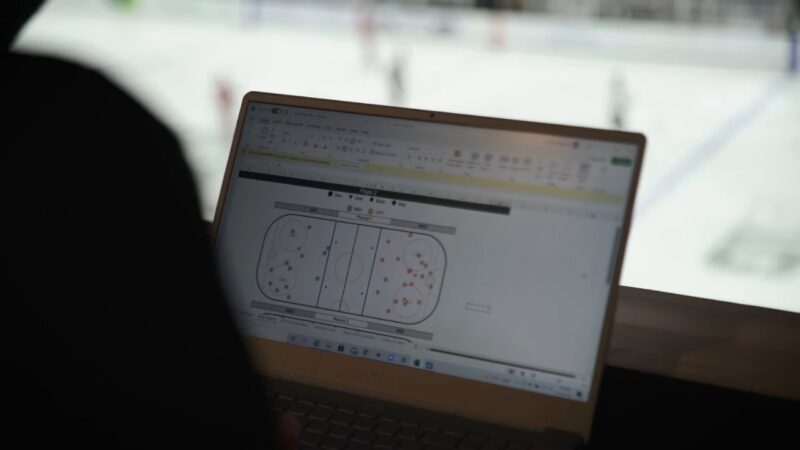
The speed of a hockey player on the ice is a blend of raw power, refined technique, and the right equipment. In the high-stakes world of professional hockey, speed can often be the deciding factor in the outcome of a game.
This article explores the fascinating world of hockey player speeds, shedding light on just how fast these athletes can go, the factors that influence their speed, and how players work to improve it.

How Fast Can Hockey Players Skate?

Hockey players are celebrated for achieving remarkable velocities, with analytics showing that some can skate as fast as 40 km/h (25.5 mph). In the NHL, data indicates players regularly exceed 30 km/h, with peak speeds surpassing 40 km/h.
This level of speed is not just for show; it’s a critical component of a player’s effectiveness on the ice, allowing them to chase down pucks, evade defenders, and create scoring opportunities. Connor McDavid, often recognized as the fastest skater in NHL history, exemplifies what it means to combine speed with skill.
But that wasn’t always the case.
What Does Statistical Data Say?
The average speed of a hockey player in 2024 is between 10-25 km/h, with some top players reaching 30-35 km/h. This is a noticeable improvement from a decade ago when the average top speed of an NHL player was around 29 km/h.
Some players, such as Connor McDavid, have even surpassed 40 km/h in a game. This shows how the sport of hockey has evolved to favor faster and more athletic players.
Who Are the Fastest Hockey Players Ever?
| Rank | Player Name | Top Speed (km/h) | Top Speed (mph) | Notable Achievements |
|---|---|---|---|---|
| 1 | Connor McDavid | 40.9 | 25.4 | Known for his exceptional speed and agility on the ice. |
| 2 | Dylan Larkin | 36.0 | 22.4 | Holds the record for the fastest lap in NHL All-Star Game skills competition history. |
| 3 | Mathew Barzal | 34.5 | 21.4 | Demonstrated remarkable speed in NHL skills competitions. |
| 4 | Nathan MacKinnon | 37.0 | 23.0 | Renowned for his explosive acceleration. |
| 5 | Carl Hagelin | 36.1 | 22.5 | Known for his short bursts, making him one of the fastest skaters in the NHL. |
What Factors Influence Skating Speed?
Several variables play a significant role in determining how fast a player can skate. The design of the skate blade is a prime example.
Shorter blades offer less resistance against the ice, enabling players to be much faster. This principle extends to the type of ice and the skater’s weight and technique; each can dramatically affect performance.
Players with a lighter frame can move more swiftly, but the technique is where the true art lies. Skaters with a more refined technique can achieve greater speeds, highlighting the importance of skill over brute strength alone.
Individuals should focus on enhancing leg strength and cardiovascular fitness while also honing their skating technique.
The use of shorter skate blades is another strategy employed by players looking to gain an edge over their competitors.
Do Player Training Regimens Play a Role?

Modern hockey players follow rigorous, scientifically backed training regimens specifically designed to enhance speed. These regimens often include plyometric exercises to improve explosive power, sprint intervals for enhancing speed and endurance, and agility drills to increase maneuverability on the ice.
For example, plyometric jump training is widely used to improve lower body strength and power, critical for explosive starts and stops. Off-ice training involving resistance bands and treadmill sprints simulates on-ice conditions, allowing players to focus on stride length and frequency, pivotal for improvement.
How Has Technology Improved Hockey Equipment?
The last decade has seen significant advancements in hockey equipment, directly impacting player speeds. Modern skate designs feature lighter, more durable materials that offer better support and power transfer.
The development of aerodynamic jerseys and tighter fitting gear reduces drag, allowing players to move faster. Furthermore, innovations in ice maintenance technology, such as laser-leveling for ice surfaces, ensure smoother and faster playing conditions.
These technological advancements collectively contribute to the increased speeds observed in the sport.
How Have Rule Changes Affected Hockey?

Rule changes in the NHL, such as the introduction of the hybrid icing rule and restrictions on goalie equipment size, have subtly but significantly impacted the game’s pace. By reducing stoppages and streamlining play, these adjustments have facilitated a faster, more continuous game flow.
Analysts note that such changes have not only sped up the game but also increased the physical demands on players, further emphasizing the importance of speed and conditioning.
Speed Skating vs. Hockey Skating: What’s Different?
It’s worth noting the distinction between speed skating and the type of skating seen in hockey. Speed skating occurs on a different track and requires equipment specially designed for maximum efficiency.
This form of skating emphasizes long, graceful strides and a focus on aerodynamics. In contrast, hockey players must balance this factor with agility, maneuverability, and the ability to make quick, strategic plays.
While Wayne Gretzky, known for his unmatched agility and playmaking ability, may not have been the fastest skater, his skills on the ice demonstrated that it is just one aspect of a player’s overall effectiveness. Hockey demands a combo of abilities, where speed must be coupled with skill, strategy, and an acute awareness of the game.
Summary
In 2024, the average speed of a hockey player hovers between 10-25 kilometers per hour, with top players pushing the boundaries at 30-35 kilometers per hour.
With advancements in training, equipment, and technique, hockey players are skating faster than ever, thrilling fans and challenging the limits of what’s possible on the ice.
Related Posts:
- How Long Is the Average Hockey Game? - Puck Drops,…
- Can Hockey End in a Tie? Are There Shootouts in NHL…
- How Slide Board Exercises Can Transform Your Ice Skating
- Why Do They Let Hockey Players Fight? Is Fighting Allowed?
- Florida Panthers Player Throws Shade at Maple Leafs…
- Unbreakable Dreams: 4 Best Players to Never Win the…












